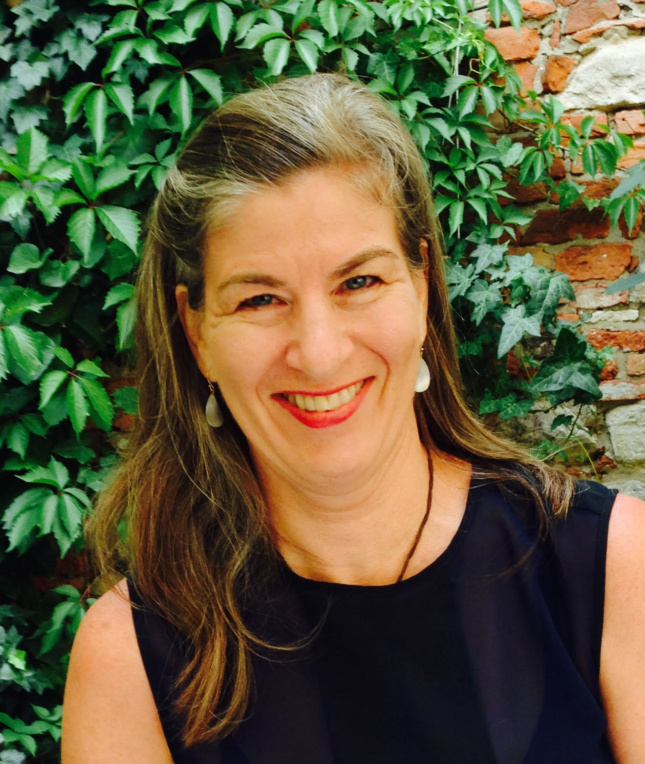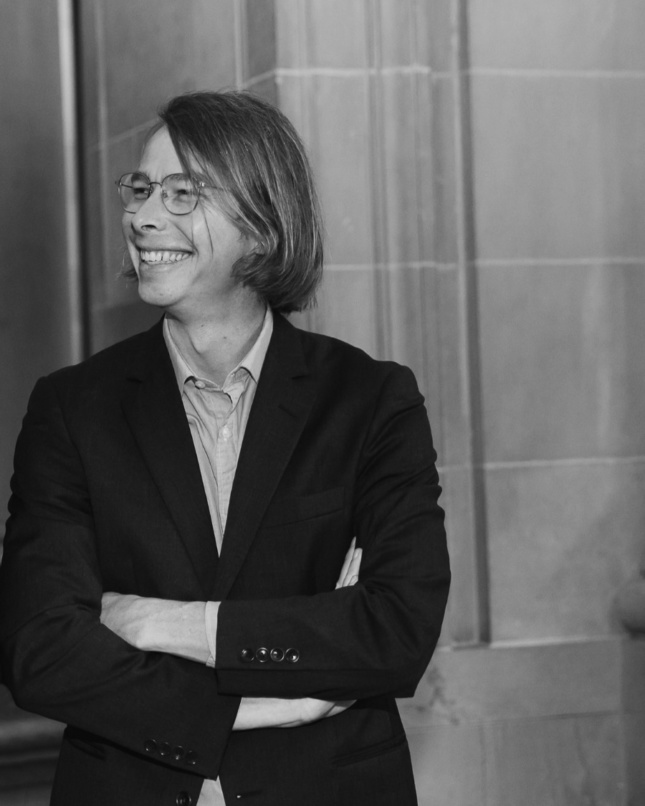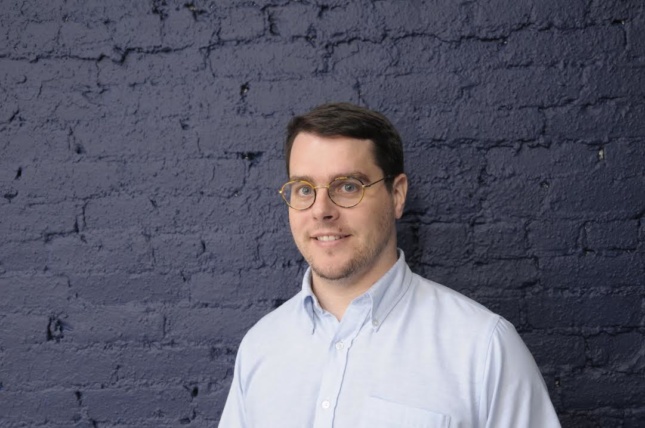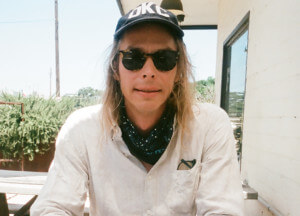
Executive Editor 2006–2013
My years as editor of The Architect’s Newspaper, between 2006 and 2013, were exciting, of course, but eye-opening too, in ways I had not expected.
There I was, sitting in the catbird seat with many of the world’s most talented and prominent architects working within a few blocks (at least, no farther away than 13.4 miles), ready and willing to answer emails, give tours of their offices, and reveal their latest projects and agendas—with more from abroad checking in as they passed through town. How could that not be fun?
After a decade as a New York Times reporter, where every encounter with an architect was fraught and slightly adversarial—with both sides trying to extract something, whether quote, coverage, or exclusive image—at The Architect’s Newspaper, I was tracking shared interests. Instead of asking “What have you done for the public lately?” I wanted to know about the compelling and relevant issues important to architects right now. Anyone passionately interested in architecture was free to chime in, and often did, including artists, engineers, software developers, and many more.
In the short years since its founding as a nimble observer and attentive commentator, The Architect’s Newspaper became thoroughly embedded in the community it covered. It was a time when architecture was taken seriously across the land, but especially in New York City under Mayor Michael Bloomberg. So much so that it took just a few phone calls in the fall of 2009 to convene four NYC commissioners—transportation commissioner Janette Sadik-Khan, design and construction commissioner David Burney, planning commissioner Amanda Burden, and parks and recreation commissioner Adrian Benepe—for a roundtable conversation on the record about what was succeeding, failing, and in the works for the city over the coming years.
I cannot imagine the press today so easily being given that level and quality of access. Across New York City, cultural, architectural, and urban institutions were taking advantage of this moment of being heard by the city’s policy leaders and decision makers. There were forums, exhibitions, and commissioned works of the highest caliber that could realistically hope to have an impact on the urban environment. Of course, the entire population was also watching every progressive—and regressive—move around rebuilding at the World Trade Center site. AN was there too.
In 2010, I recall tagging along with a crew from City Hall trailing behind Barry Bergdoll, then MoMA’s chief curator of architecture and design and engineer Guy Nordenson as they explained the innovations for dealing with climate change offered up by an extraordinary roster of architects, landscape designers, engineers, and more in the exhibition Rising Currents: Projects for New York’s Waterfront. Many public servants at that time probably still believed the way to cope with flooding was with concrete barriers. Rising Currents changed that idea, for good.
In 2013, the Architectural League took on the city’s intractable housing problem by sponsoring architects to develop solutions, including micro-units for single adults. By 2016, people were moving into the first micro-loft buildings.
But for me, it was actually when the Great Recession hit that I witnessed what members of this profession are truly made of. As offices closed and shrank—including ours—and people of great talent found themselves unemployed and unmoored from even the possibility of designing much in the near future, I beheld an extraordinary resilience. Many times I would hear from principals of offices once 20-plus strong, forced down to one architect and a part-time draughtsperson, saying it was great to be a hands-on designer again. Others entirely reinvented themselves and developed new expertise in health care or the suddenly relevant field of security design. Turning a personal mission into a public mandate, Jonathan Kirschenfeld founded the Institute for Public Architecture in 2009, championing integrity and quality for building types—childcare facilities, low-income housing, prefab—too often churned out on the cheap.
The speed and ingenuity with which architects showed they could halt, pivot, and charge in a new direction was astonishing. The old cliché that designing is problem-solving finally made real sense to me: Whatever the economy threw at them, architects could figure it out. Especially gratifying and illuminating for me were a series of interviews we conducted, called “Recession Tales.” We talked to architects from different generations, professional backgrounds, and experiences about how they had handled personal or professional setbacks in the past: Harry Cobb, James Polshek, Rob Rogers, and David Adjaye among them.
Whether it was Cobb describing being blacklisted in the 1970s after curtain wall failures at the John Hancock Tower in Boston, or Adjaye admitting his severe financial woes, every architect we spoke to drew intimately vivid pictures of tough times endured with courage, revealing impressive strengths and an extraordinary ability to pull together.
I suppose the profession has never been for the faint of heart. The expand-and-contract nature of the building trades is always rolling through cycles. Still, as editor of The Architect’s Newspaper during one of the toughest roller-coaster rides in recent memory, I was buckled into a front row seat, and the ride was unforgettable.

West Editor 2007–2015
I arrived at The Architect’s Newspaper at just the right time.
It was fall 2006, and I was a West Coast newbie. Little did I know that the region was undergoing fundamental shifts that I would get to record, experience, and even influence, over the next nine years.
In my head, L.A. was still a single-family, concrete, and car-dominated place. But it was quickly shifting to a much denser one full of new subway lines, high-speed rail, corridors of mixed-use development, new parks, and anti-sprawl legislation. Its architects were taking advantage of a magical mix of schools, creative energy, and technical capability to create some of the best work in the world. And the rest of the region—from San Diego up to Seattle—was steadily churning out similar innovation, and, thanks largely to booming tech giants, growing like never before, welcoming some of the world’s most famous architects while developing an impressive new garde (despite a major lull during the Great Recession). Of course, they were facing darker issues as well, like booms and busts, gentrification, affordability crises, gridlock, and mushrooming homeless populations.
Through it all, I drove my beat-up Hyundai to offices, meetings, classrooms, and building sites, making friends, and getting the scoop. My role as AN’s West Coast editor helped me become—despite my outsider-ness—embraced by a coast, and a design community that I learned favors innovation, creativity, and sheer will over status and hierarchy. It started with our first launch events, which drew hundreds of designers eager for a publication to help pull them all together. And AN encouraged me to pursue new features and investigations, promote competitions, find my voice through editorials, and build community one event at a time.
The Architect’s Newspaper, for me, represented much more than a publication. It represented a home. That’s what it’s done for writers, and of course, architects, around the country. I no longer have that Hyundai, but the many design circles AN has helped nurture and connect are still as strong as ever.

Executive Editor 2014–2015
I started working at The Architect’s Newspaper in September 2005 when it was still being run out of the Menking loft on Lispenard Street in New York’s Chinatown. My title was Projects Editor and my primary task was producing a custom publication for the Steel Institute of New York called Metals in Construction. It was one of the many sidelines that the publisher, Diana Darling, would initiate over the years to keep the paper in the black. Her frenetic energy and torrent of business ideas put a fine point on just how audacious an endeavor it was to launch a newspaper in an era in which every pundit with half a platform was declaiming the death of print, not to mention the death of the authoritative publication itself, which was prophesied to wither away under the “democratizing” glare of the internet. Well, here we are. AN is 15 years old and flourishing, doing a better job than ever of presenting just how exciting and essential architecture is to society. Meanwhile, the internet gave us Twitter, Facebook, and Donald Trump. Thank you very much.
My tenure at AN lasted a decade before I left to edit Texas Architect. There were many highs and lows during that time, but nothing sticks in my mind quite so much as those early days in the loft, which was an education in itself, full of books and art, emanating an edgy, downtown vibe. It was a family business, and we were all part of the family. The editors worked in an office at the front of the loft, Diana had her space at the back, and the rest of us—the production team, the grunts—were piled cheek by jowl into a separate apartment at the rear corner—the loft’s Siberia, if you will. Bill and Diana’s daughter, Halle, eight at the time, was around. She would swipe our scissors right off our desks. And there was a puppy, Coco, who would lope into Siberia, dashing in and out. The work was intense and focused, but there was no shortage of fun. A certain sense of wry humor, which found its way into the editorial (an enduring legacy of the paper), bound us together, as did the awareness that we were part of the larger cultural phenomenon called architecture, whether it wanted us or not. At this point, it seems to have wanted us.
Long Live AN!

Current Executive Editor
It is always fun to go back to the very first issues of AN for inspiration. I noticed a small box on the back page of those issues marked “Punchlist,” a section that named websites for reference. Many were unfamiliar, as we might expect, but what struck me was the prescience of anticipating the digital-analog media conundrum in 2003. Since the beginning, AN has been attempting to build bridges between print and the internet. How do they relate? Is the paper a legacy print publication that has a website? Or is it two entirely different beasts?
The speed of the web (and thus the news cycle in general) is always increasing, while print stays relatively the same. This means that at AN we are constantly trying to rethink the relationship between print and digital. In January 2018, we debuted a new section in the paper called “In Case You Missed It,” a roundup of all the things that happened online while we were making the issue. It not only serves as a curated briefing for those who don’t troll Twitter all day, but it also sequesters the news into a neat area, leaving the rest of the paper to entertain longer, more insightful articles: in-depth follow-ups, expert takes, off-the-wall stories, and historical ruminations that don’t need to fit into the ebbs and flows of the 24-hour news cycle.
The strategy seems to be working: We have published some high-impact articles that have shifted the discussion on a number of topics, as well as news stories that have gotten hundreds of thousands of views and exposed us to new reaches of the internet.
In an era of Instagram and memes, it is imperative that we keep rethinking what the media is today and how architectural news and discourse are affected by current shifts in technology, information dissemination, and the degradation of our attention spans.
On the website, this battle will take place as we begin to put print content online in a way that starts to mimic the curated and cohesive feel of a print publication. For instance, we might put entire features online all at once with a single web page serving as a datum through which other articles can be accessed. In print, we will try to relate back to the speed and timeliness of the web by providing links for reference.
We look forward to embracing these challenges and are excited for where they will take us.









